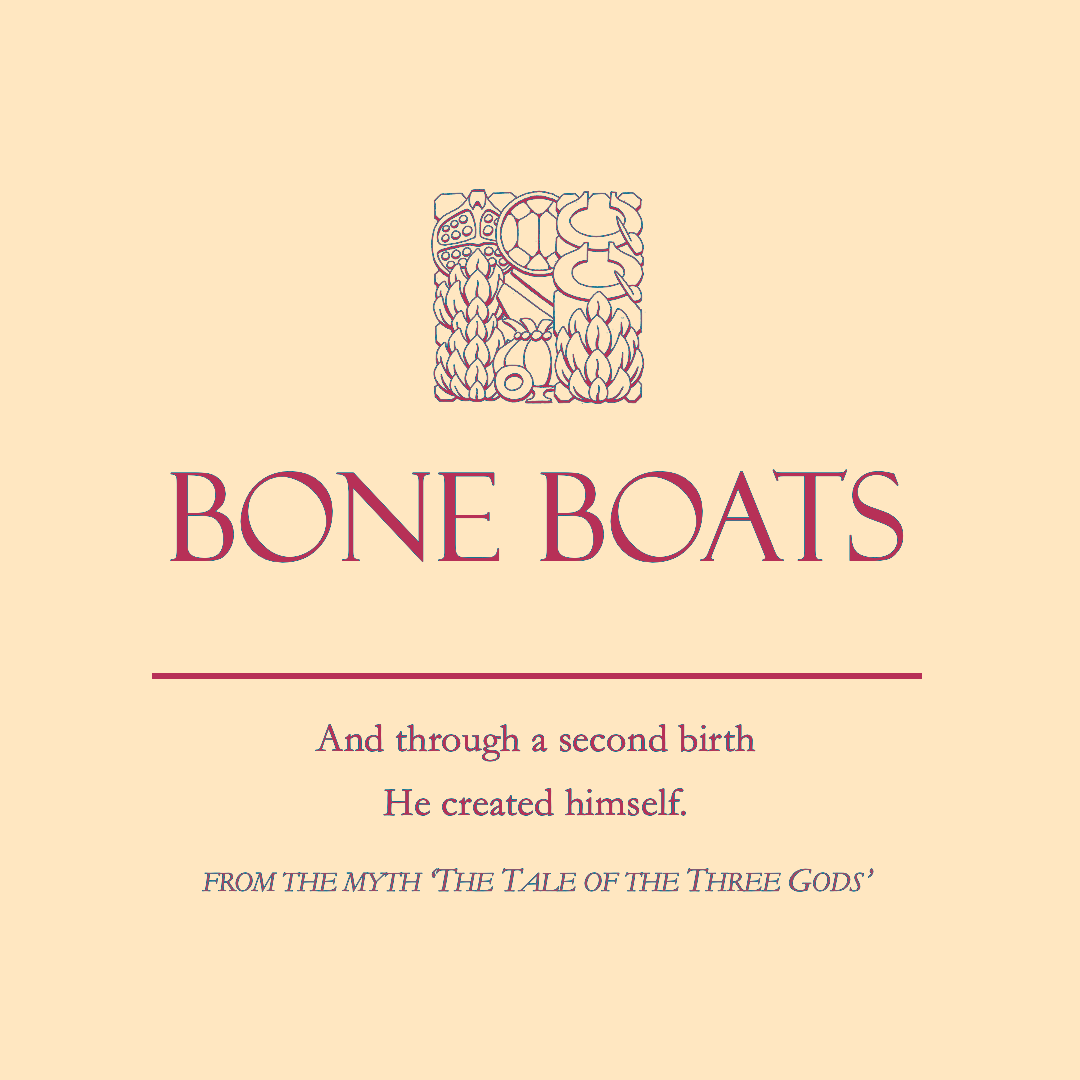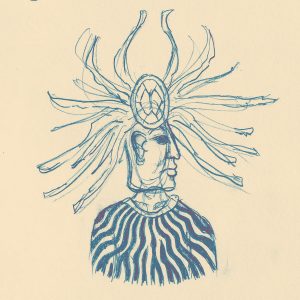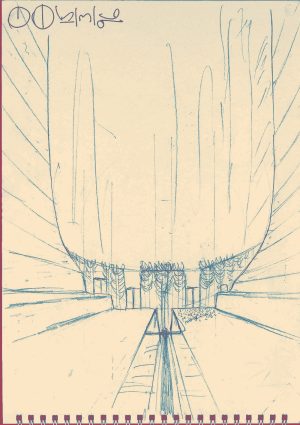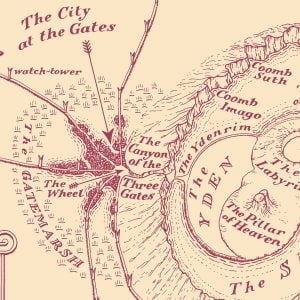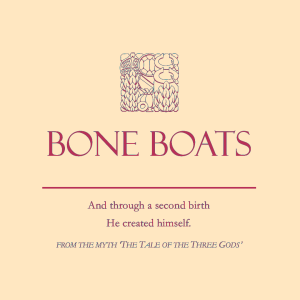Chapter: Bone Boats
Information relevant to the 13th chapter of The Third God
the Kharon and their bone boats
The Kharon are a specialized caste in Osrakum, living in family units in boathouses on the outer slopes of the Ydenrim, as well as the shores of the cone that walls in the Plain of Thrones. These family units vary in size. The smallest may have but a single boat, the largest many. The kharon mate exclusively among themselves
A Kharon child has its right eye plucked out at birth
A Kharon mask is made of ivory or bone. These masks show a face in right-profile. Reading this as one would a glyph gives the impression that the steersman is gazing into the future
The first drawing depicts a steersman wearing the characteristic headdress: a nest of bone fragments at the heart of which is located a turtle shell—a symbol for the sky
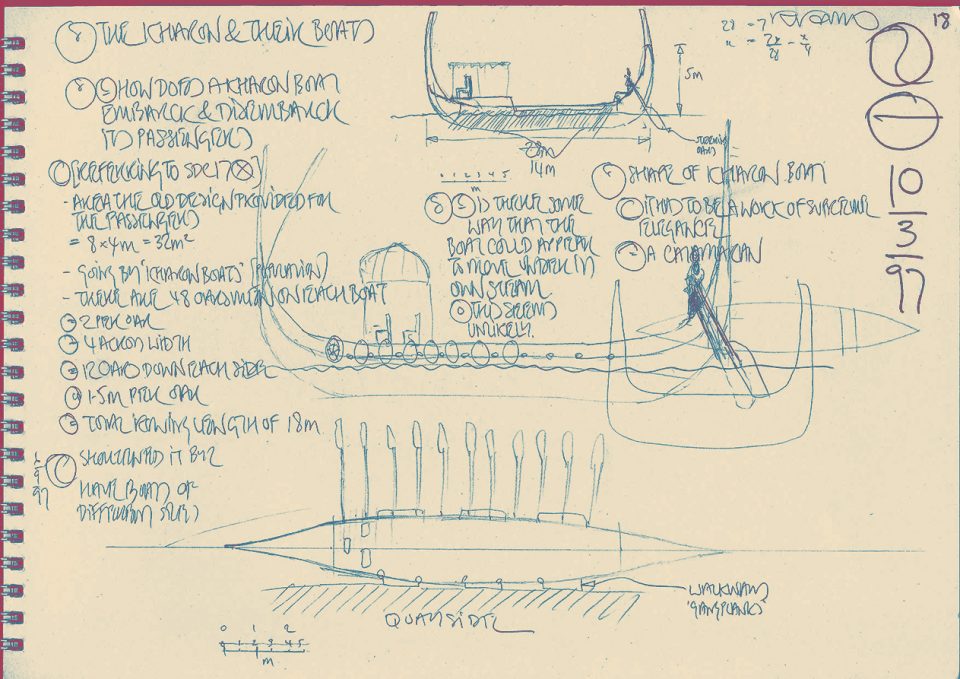
The second diagram shows rough sketches of the bone boats with which the Kharon ferry people back and forth across the Skymere. A galley with extremely tall prow and stern posts, a bone boat is propelled by oarsmen—more Kharon rowing beneath the deck. A bone boat is constructed and maintained from the bones of the dead of the family that operate it. Kharon are bound to their ancestral vessels in life and death
the Valley of the Gate
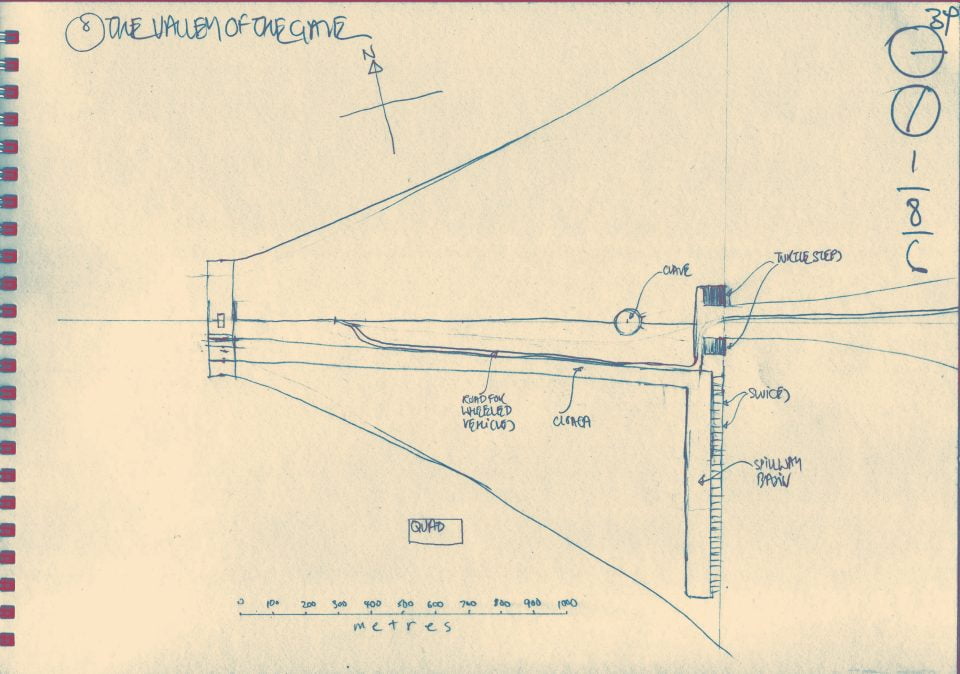
This is a map of the Valley of the Gate—not only the largest coomb in the Sacred Wall, but also the mouth of the Canyon of the Three Gates as it opens into the crater of Osrakum
On the left, the throat of the valley is closed by the Black Gate. The valley itself is filled with hexagonal columns of black basalt. The Valley of the Gate connects to the Isle by means of the Great Causeway. To either side of this, the Valley descends to the Skymere by two flights of Turtle Steps
The Cloaca passes under the Black Gate and cuts down through the valley. Before it reaches the Skymere, it opens into a huge basin. This spillway has been delved into the bedrock so that it is at a lower level than the lake. Slots cut into the rock wall that separates the basin from the Skymere are controlled by sluices. By means of these sluices, the overflow of water from the Skymere into the Cloaca can be regulated. The purpose of this system is to keep the level of the Skymere constant—a task especially critical during the Rains when, if it were not for the Cloaca, the level of the Skymere would rise, flooding the coombs of the Masters
Cloaca water gates
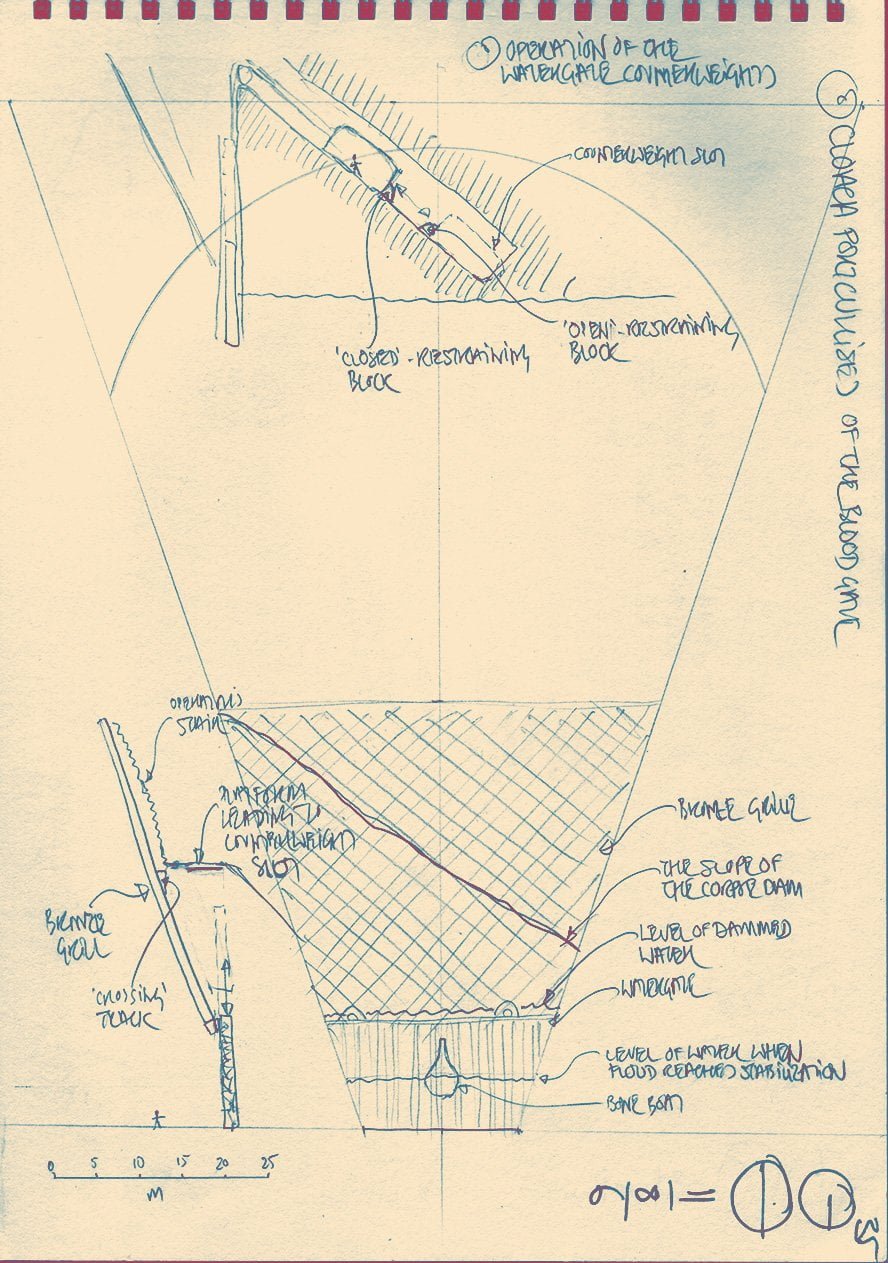
the Green Gate
The Green Gate is the first of the Three Gates and is a curtain wall, running across the Canyon, the surface of which is covered in bronze spikes, so that the whole mass looks like an immense hedge. At the lower level, gates act as ‘airlocks’, where goods from the Outer World are transferred to the other side by Red Ichorians. Gates higher up, on either side, allow the leftway and the Lords’ Road to continue along the Canyon. The former allows messages to pass in and out of Osrakum: the latter is used by the Chosen.
The drawing also shows how the Cloaca passes under the Gate through grilles. A throng of people are shown for scale
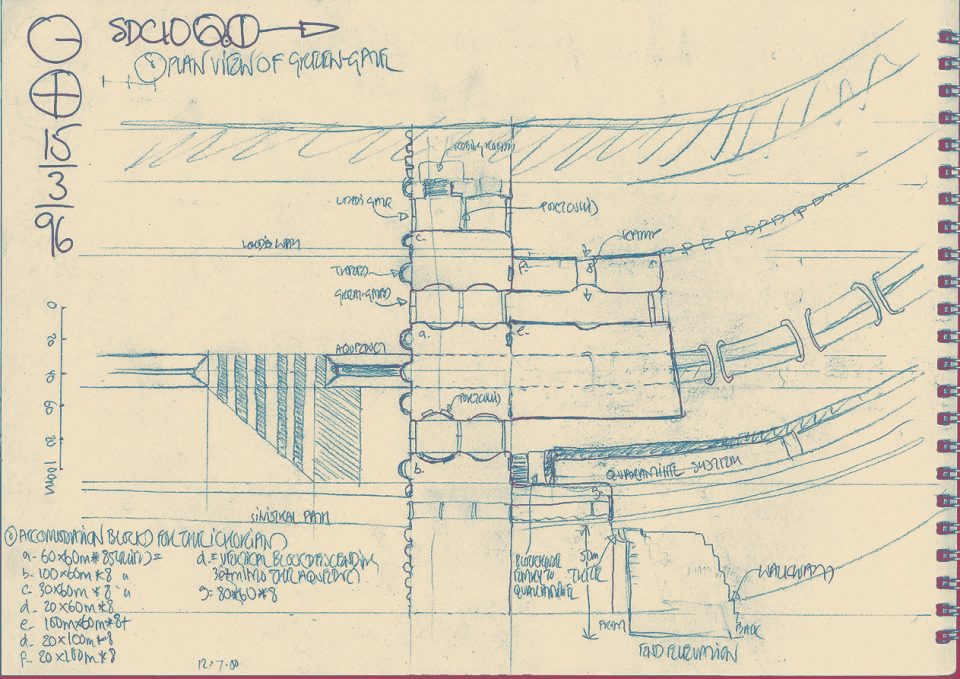
The second drawing shows a plan of the Green Gate. Note the double set of gates—each consisting of three gates—that seal off, between them, two ‘airlocks’. It is by this means that ‘contamination’ from the outer world is kept out of Osrakum
the Wheel
the City at the Gates
The City at the Gates is so named because it lies at the gates of Osrakum. Built on land reclaimed from the Gatemarsh, it has at its heart the great market of the Wheel, from which the five raised roads radiate out like spokes across the Guarded Land. The habitations of its almost three million citizens spread out along the causeways that carry the roads with their watchtowers
From the Wheel, the Canyon of the Three Gates leads into the crater of Osrakum
the Twenty Legion Camp
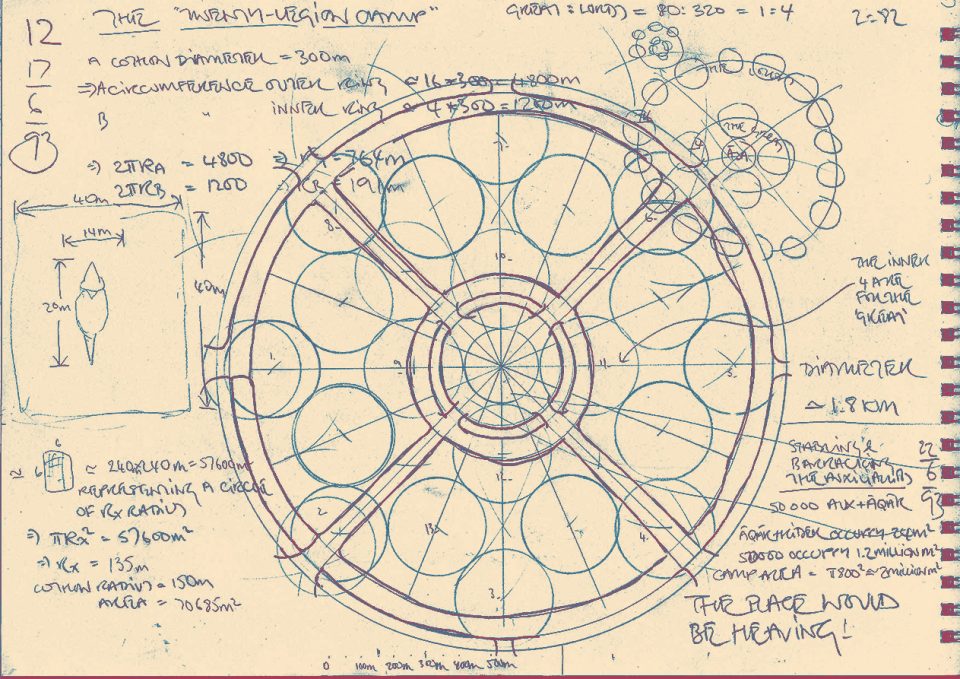
The first diagram shows a plan of the Camp looking like a four-spoked wheel. Note the ditch and wide road running along its rim. The four ‘spoke’ roads connect to a road running around the hub of the Camp that is protected by another ditch that is crossed by four earthbridges. In this hub is the Iron House and the camp of the Masters. Each of the circles that fill the outer camp is the size of a standard cothon and represents the location of a legion
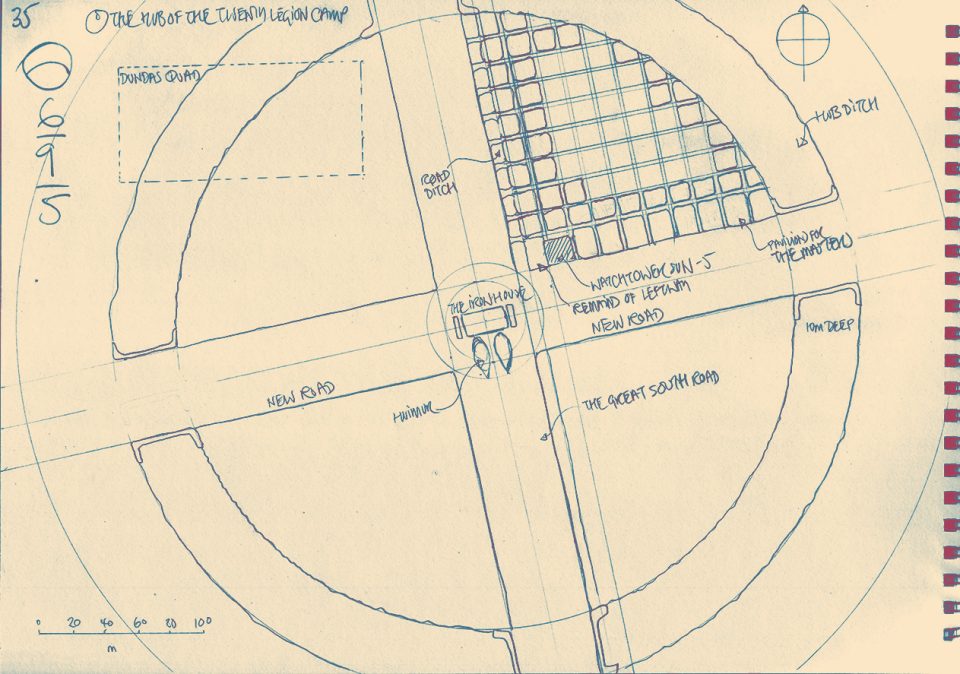
The second diagram shows the hub of the Twenty Legion Camp—the camp of the Masters. At the crossroads—where the four spoke roads of the Camp meet—stands the Iron House. Each quadrant is given over to the pavilions of the Masters—one such quadrant being illustrated. Note that the spoke road running roughly north-south is actually the Great South Road whose leftway has been demolished to make way for the Camp, though one of its watchtowers still remains intact as is depicted
